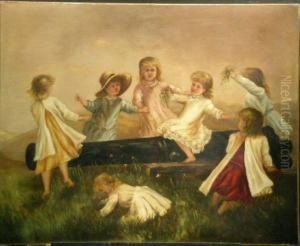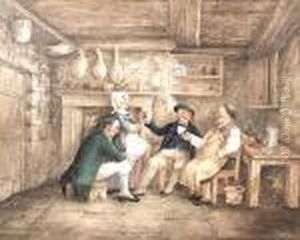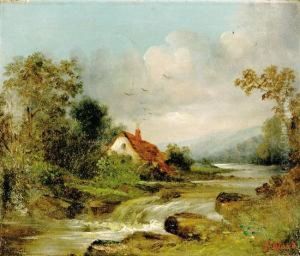Wood Paintings
Grant Wood was an American painter best known for his paintings depicting the rural American Midwest, particularly the painting 'American Gothic,' which has become an iconic piece of 20th-century art. Born on February 13, 1891, in Anamosa, Iowa, Wood's early life on a farm would deeply influence his later work, imbuing it with a strong sense of place and the values of the rural communities he knew intimately.
After his father's death in 1901, Wood's family moved to Cedar Rapids, where he eventually attended the School of the Art Institute of Chicago. Despite beginning his career as a traditional craftsman and high school teacher, Wood traveled to Europe four times between 1920 and 1928, where he was exposed to the work of many post-Impressionist artists. However, it was the German and Flemish Renaissance painters that had the most profound impact on his style, leading him to adopt a meticulous technique and attention to surface detail that would characterize his later work.
Returning to the United States in the late 1920s, Wood turned his focus to the depiction of his native Midwest, seeking to create a distinctly American art form free from European influence. His efforts culminated in 1930 with the creation of 'American Gothic,' showcasing a farmer and his daughter standing in front of a Carpenter Gothic house. The painting was a critical success, catapulting Wood to national fame and leading to his association with the Regionalist art movement, which emphasized rural American themes and landscapes.
Throughout the 1930s, Wood continued to produce highly detailed paintings celebrating the American Midwest, though his work often contained a level of ambiguity and complexity that belied its initial straightforward appearance. Despite his popularity, his art was sometimes criticized for its idealized view of rural life and for what some perceived as its conservative values.
Wood's later years were marked by his role as an advocate for art in the Midwest. He became a leading figure at the University of Iowa's School of Art, where he taught from 1934 until his death. Despite facing controversy over his opposition to the abstract art trends of the time, Wood was a beloved teacher and mentor to a generation of artists.
Grant Wood's legacy is that of a quintessentially American artist, whose work reflects a deep affection for the landscapes and people of the rural Midwest. He died on February 12, 1942, in Iowa City, Iowa, but his work continues to be celebrated for its craftsmanship, attention to detail, and unique vision of America.







